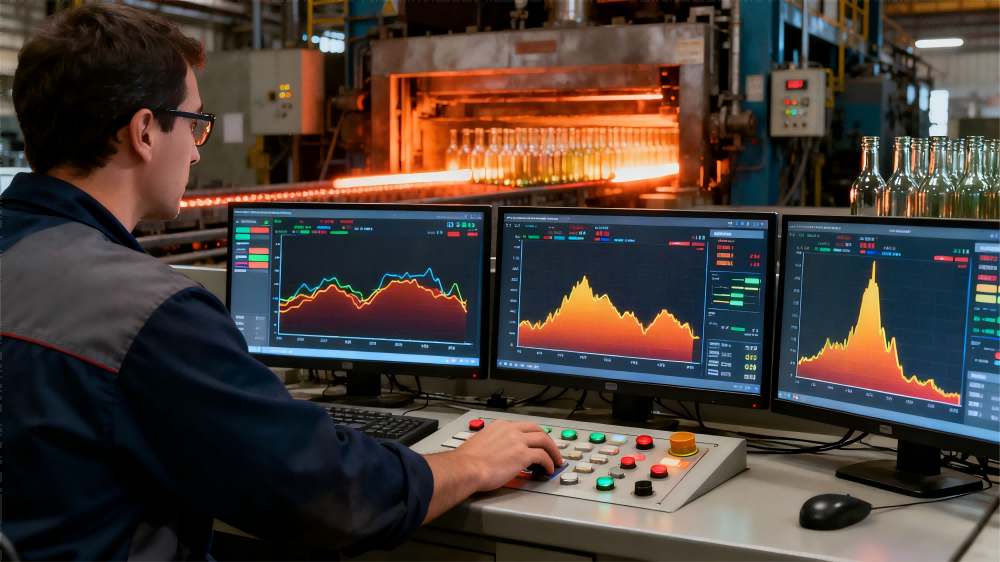The heating stage is the initial step of the annealing process. Its purpose is to steadily heat the glass bottles with an initial temperature lower than the annealing temperature to the stable annealing temperature, laying the foundation for subsequent stress relief. The heating rate needs to be flexibly adjusted in combination with the material, wall thickness and shape of the glass bottle. The heating rate of ordinary glass bottles is usually controlled at 20℃/min-30℃, while for glass bottles with special shapes or larger wall thicknesses, the heating rate needs to be further slowed down. If heated too quickly, new stress is likely to occur inside the glass bottle. If it is too slow, it will prolong the production cycle and reduce production efficiency.
When the glass bottle reaches the stable annealing temperature, it enters the holding stage, which is a crucial step in the annealing process and directly determines the annealing effect. The holding temperature is generally 20℃ to 30℃ lower than the glass transition temperature. The holding time needs to be calculated based on the thickness of the glass bottle, usually corresponding to 1 to 2 minutes for each millimeter of wall thickness. For instance, a glass bottle with a wall thickness of 5 millimeters can be kept warm for approximately 5 to 10 minutes. At the same time, it is necessary to ensure that the temperature inside the annealing furnace is uniform to avoid incomplete stress relief due to local temperature differences.
After the heat preservation is completed, the glass bottle enters the slow cooling stage. During this stage, the glass bottle needs to be cooled slowly to a lower annealing temperature to prevent the generation of new stress due to rapid cooling. The cooling rate is usually controlled at 5℃ to 10℃ per minute. Uniform cooling can be ensured by adjusting the ventilation volume of the annealing furnace and the flow rate of the cooling medium, etc. If the cooling is not uniform, the glass bottles may deform or break, which will affect the product quality.
The final stage is the rapid cooling phase. After the glass bottles are cooled to a lower annealing temperature, the cooling rate can be accelerated to room temperature to enhance production efficiency and shorten the overall annealing time. When cooling rapidly, the speed should be adjusted according to the characteristics of the glass bottle. Glass bottles with thinner walls and simpler shapes can cool slightly faster, while those with thicker walls and more complex shapes need to cool down appropriately. During the process, the condition of the glass bottles should be closely monitored. If any abnormality is found, the cooling parameters should be adjusted in time to ensure the smooth completion of annealing of the product.

